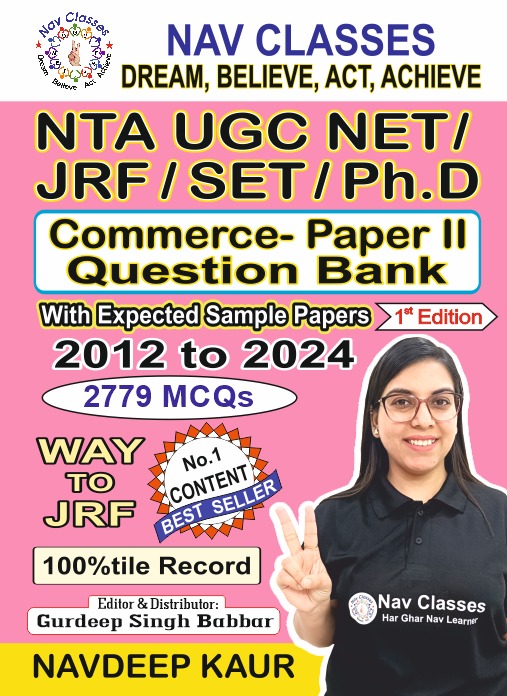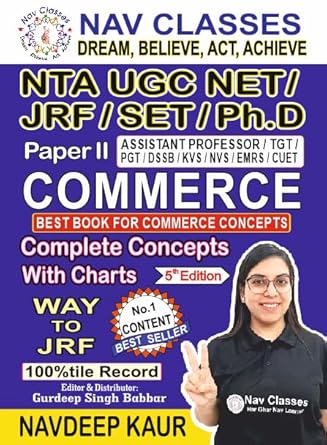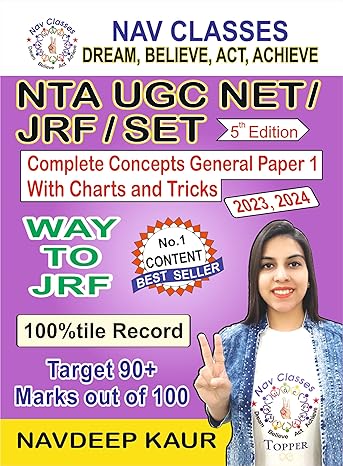Directions : In question, some statements are given, followed by two conclusions I and II. You have to consider the statements to be true, even if they seem to be at variance from commonly known facts. You have to decide which of the given conclusions, if any, follow from the given statements. Indicate your answer.
1. Statements: No apple is a plum.
All plums are oranges.
All oranges are mangoes.
Conclusions: I. All plums are mangoes.
II. At least some mangoes are oranges.
A. Neither I nor II follows
B. Only I follows
C. Either I or II follows
D. Both I and II follow
SHOW ANSWER
Explanation – All plums are oranges (A) + All oranges are mangoes (A) = A + A = All plums are mangoes. Hence, conclusion I follows.
All oranges are mangoes – converse – Some mangoes are oranges. Hence, conclusion II follows. Hence option D is correct.
Directions : In question, some statements are given, followed by two conclusions I and II. You have to consider the statements to be true, even if they seem to be at variance from commonly known facts. You have to decide which of the given conclusions, if any, follow from the given statements. Indicate your answer.
2. Statements: All animals are mammals.
No mammal is reptile.
All reptiles are amphibians.
Conclusions: I. All animals are amphibians.
II. Some amphibians are mammals
A. Neither I nor II follows
B. Only I follows
C. Either I or II follows
D. Both I and II follow
SHOW ANSWER
Explanation – Checking C1: All animals are amphibians.
The class ‘animals’ is in Statement 1 and ‘amphibians’ is in Statement 3 and the link or middle term is available in Statement 2 which is an E type statement. Clearly, using these we can’t have an A type conclusion. C1, clearly, doesn’t follow.
Checking C2: Some amphibians are mammals.
Applying the same logic, we can’t get a positive conclusion using Statement 2 and Statement 3. C2, doesn’t follow either.
Option A is hence the correct answer.
Directions : In question, some statements are given, followed by two conclusions I and II. You have to consider the statements to be true, even if they seem to be at variance from commonly known facts. You have to decide which of the given conclusions, if any, follow from the given statements. Indicate your answer.
3. Statement: Some schools are classes.
Some classes are teachers.
All teachers are students.
Conclusions: I. Some students are classes.
II. All schools being students is a possibility.
A. Neither I nor II follows
B. Only I follows
C. Either I or II follows
D. Both I and II follow
SHOW ANSWER
Explanation – Checking C1: Some students are classes.
Some classes are teachers + All teachers are students = Some classes are students. Clearly, C1 follows. Checking C1: All schools being students is a possibility.
Here, no negative statement is given among the statements. Clearly, possibilities between classes do exist. C2 follows as well.
Option D is hence the correct answer.
Directions : In question, some statements are given, followed by two conclusions I and II. You have to consider the statements to be true, even if they seem to be at variance from commonly known facts. You have to decide which of the given conclusions, if any, follow from the given statements. Indicate your answer.
4. Statements: Some buses are cars.
No car is ship.
All ships are bikes.
Conclusions: I. Some buses are not bikes.
II. No bike is ship.
A. Neither I nor II follows
B. Only I follows
C. Either I or II follows
D. Both I and II follow
SHOW ANSWER
Explanation – Checking C1: Some buses are not bikes.
Here, S1 is I type, S2 is E type, and the class ‘bikes’ is the predicate in S2 which is an A type statement. When we move from S1 to S2, we get a conclusion in O type statement and as we know O type doesn’t make a definite conclusion applying deduction method. No definite conclusion can be derived out of S1, S2 and S3 together. C1, hence, doesn’t follow.
Checking C2: No bike is ship.
Converse of S3 = Some bikes are ship. Clearly, C2 doesn’t follow either.
Option A is hence the correct answer.
Directions : In question, some statements are given, followed by two conclusions I and II. You have to consider the statements to be true, even if they seem to be at variance from commonly known facts. You have to decide which of the given conclusions, if any, follow from the given statements. Indicate your answer.
5. Statements: All cups are saucers.
All plates are cups.
Some saucers are spoons.
Conclusions: I. All plates being spoons is a possibility.
II. All plates are not saucers.
A. Neither I nor II follows
B. Only I follows
C. Either I or II follows
D. Both I and II follow
SHOW ANSWER
Explanation – Checking C1: All plates being spoons is a possibility.
As there is no negative statement, possibilities between classes do exist. Clearly, C1 follows. Checking C2: All plates are not saucers.
As there is no negative statement, a negative definite conclusion is not possible. C2, hence, doesn’t follow.
Option B is hence the correct answer.
Directions : In question, some statements are given, followed by two conclusions I and II. You have to consider the statements to be true, even if they seem to be at variance from commonly known facts. You have to decide which of the given conclusions, if any, follow from the given statements. Indicate your answer.
6. Statements: No cap is a shirt.
Some trousers are caps.
All belts are shirts.
Conclusions: I. No cap is a trouser.
II. All caps being trousers is a possibility.
A. If only conclusion I follows
B. If only conclusion II follows
C. If either conclusion I or II follows
D. If neither conclusion I nor II follows
SHOW ANSWER
Explanation – Some trousers are caps (I) – conversion – Some caps are trousers (I). Hence conclusion I does not follow.
Again, ‘Some trousers are caps’ – conversion – Some caps are trousers. If some caps are trousers, what are the other caps? They could also be the trousers as well or they could not be.
Following the former presumption in mind, we can say that ‘All caps being trousers is a possibility.
Conclusion II hence follows.
Hence option B is the correct answer.
Directions : In question, some statements are given, followed by two conclusions I and II. You have to consider the statements to be true, even if they seem to be at variance from commonly known facts. You have to decide which of the given conclusions, if any, follow from the given statements. Indicate your answer.
7. Statements: No crow is a bird.
Some parrots are crows.
No bird is a sparrow.
Conclusions: I. No crow is a sparrow.
II. Some parrots are not birds.
A. If only conclusion I follows
B. If only conclusion II follows
C. If either conclusion I or II follows
D. If neither conclusion I nor II follows
SHOW ANSWER
Explanation – No crow is a bird (E) + No bird is a sparrow (E) = E + E = No conclusion. Hence conclusion I does not follow.
Again, Some parrots are crows (I) + No crow is a bird (E) = I + E = I + E = O* = Some parrots are not birds. Hence conclusion II follows.
Hence option B is the correct answer.
Directions : In question, some statements are given, followed by two conclusions I and II. You have to consider the statements to be true, even if they seem to be at variance from commonly known facts. You have to decide which of the given conclusions, if any, follow from the given statements. Indicate your answer.
8. Statements: Some milk are curd.
Some curd are butter-milk.
All butter-milk are butter.
No butter is a ghee.
Conclusions: I. No butter-milk is ghee.
II. Some butter are curd.
III. Some curd are not ghee.
A. If only conclusion I follows
B. If only conclusion II follows
C. If either conclusion I or II follows
D. If all conclusions I, II and III follow
SHOW ANSWER
Explanation – All butter-milk are butter (A) + No butter is ghee (E) = A + E = No butter-milk is a ghee. Hence, conclusion I follows
Some curd are butter-milk (I) + All butter-milk are butter (A) = I + A = I = Some curd are butter – converse – Some butter are curd . Hence conclusion II follows.
Some curd are butter (I) + No butter is a ghee (E) = Some curd are not ghee. Hence, conclusion III follows.
So, all the conclusions follow.
Hence option D is the correct answer.
Directions : In question, some statements are given, followed by two conclusions I and II. You have to consider the statements to be true, even if they seem to be at variance from commonly known facts. You have to decide which of the given conclusions, if any, follow from the given statements. Indicate your answer.
9. Statements: All letters are envelopes.
No envelope is post office.
Some post offices are postmen.
Conclusions: I. Some postmen are letters.
II. No postman is letter.
A. If only conclusion I follows
B. If only conclusion II follows
C. If either conclusion I or II follows
D. If neither conclusion I nor II follows
SHOW ANSWER
Explanation – E) + I = E + I = O* = Some postmen are not letters.
Therefore, none of the conclusions follows. But conclusion I and II form I-E type of complementary pair. Therefore, either conclusion I or II follows.
Hence option C is the correct answer.
Directions : In question, some statements are given, followed by two conclusions I and II. You have to consider the statements to be true, even if they seem to be at variance from commonly known facts. You have to decide which of the given conclusions, if any, follow from the given statements. Indicate your answer.
10. Statements: No animal is a rat.
Some cows are animals.
All bears are rats.
Conclusions: I. Some animals are cows.
II. No bear is an animal.
A. If only conclusion I follows
B. If only conclusion II follows
C. If either conclusion I or II follows
D. If both conclusion I and II follow
SHOW ANSWER
Explanation – Some cows are animals (I) – conversion – Some animals are cows (I). Hence conclusion I follows.
Again, All bears are rats (A) + (No animal is a rat (E) – ) conversion – No rat is an animal = A + E = E = No bear is an animal. Hence conclusion II follows.
Therefore, option D is correct.
What’s your score Let’s see Who Topped







One Response
6/10. Thank you mam for evrything.